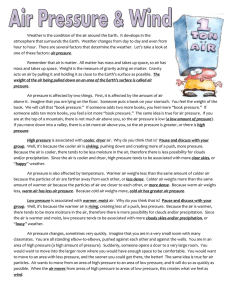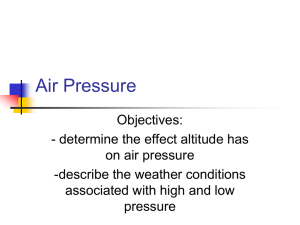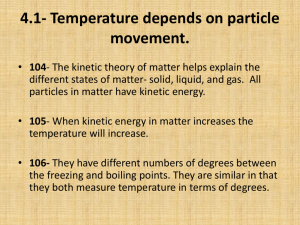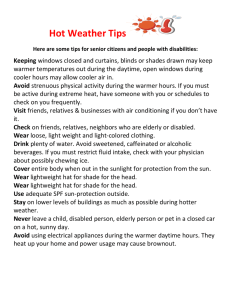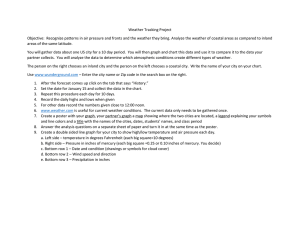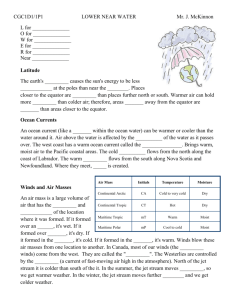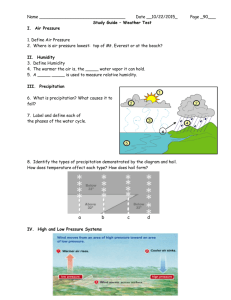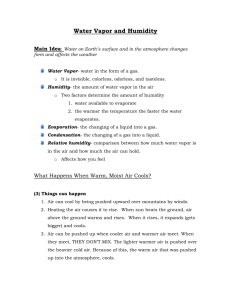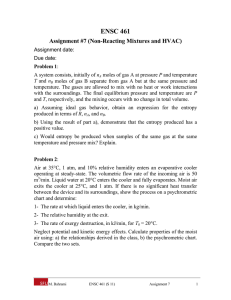Graphic Organizer (Booklet)
advertisement
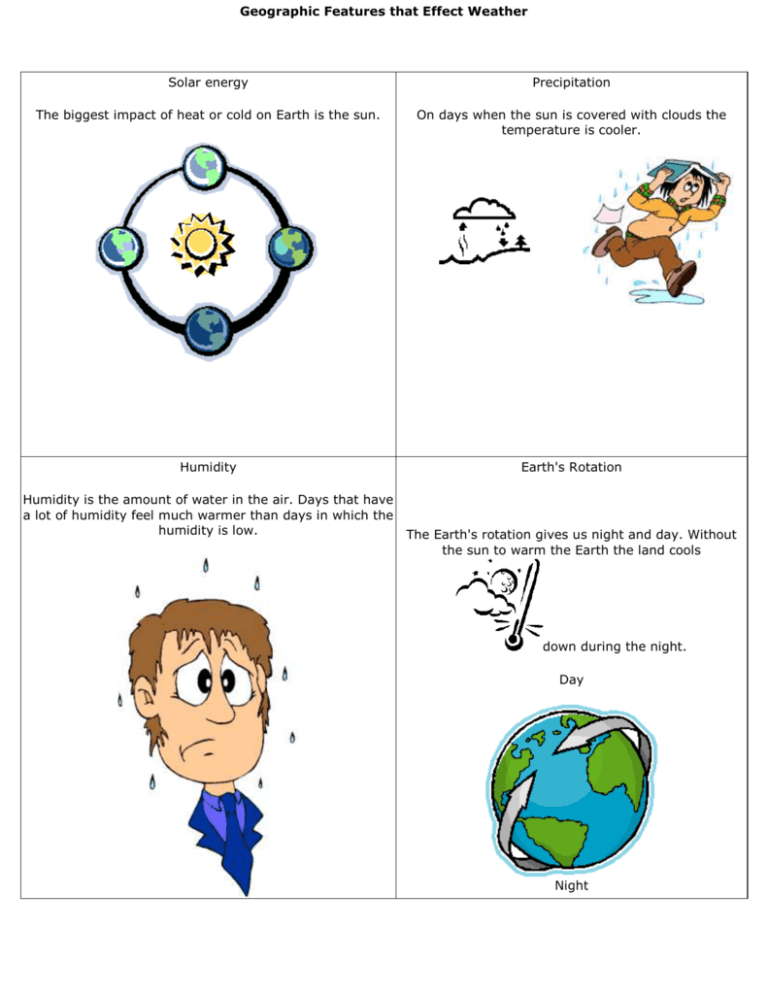
Geographic Features that Effect Weather Solar energy Precipitation The biggest impact of heat or cold on Earth is the sun. On days when the sun is covered with clouds the temperature is cooler. Humidity Earth's Rotation Humidity is the amount of water in the air. Days that have a lot of humidity feel much warmer than days in which the humidity is low. The Earth's rotation gives us night and day. Without the sun to warm the Earth the land cools down during the night. Day Night Earth's tilt Topography (mountain height and slope) The half of the Earth (called hemisphere) closest to the sun is having summer while the half of the Earth away from the sun is having winter. In mountainous regions the hot air moves up the slopes during the day and down the slopes at night. On the eastern side of the mountain range the weather is dryer. Elevation Large Bodies of Water The higher the elevation the colder and more precipitation Wind coming off large bodies of water are usually full an area receives. of moisture. Wind that travels across a body of water will feel cooler in the summer and warmer in the winter. Coast City Coastal areas are usually warmer in winter and cooler in the summer. The cool air off the ocean blows inland during the day and out to sea at night make the temperatures milder that inland. The air above large cities is often warmer than the surrounding area. Wind Wind coming from the north is usually colder than wind coming from the south.
